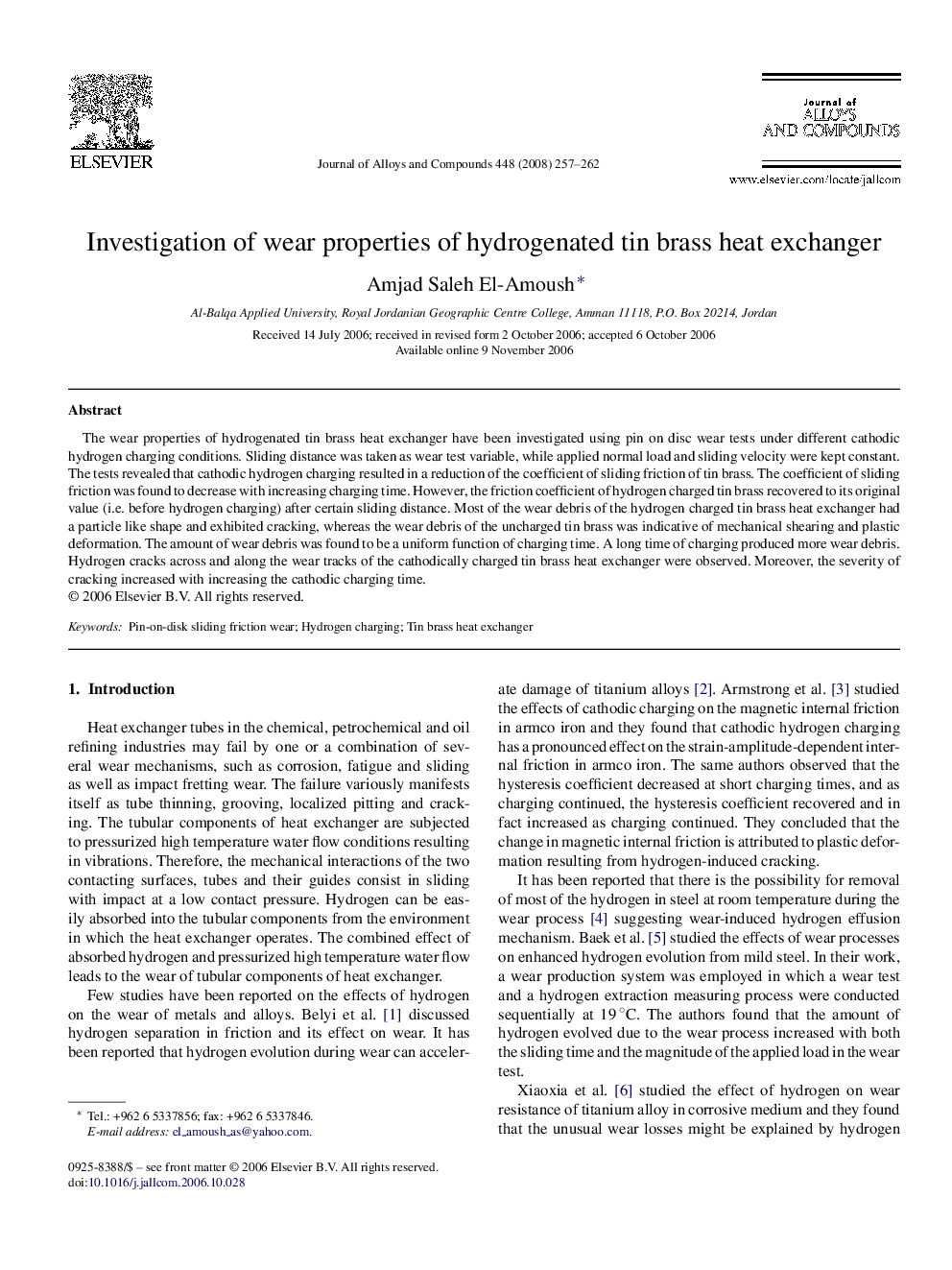| Article ID | Journal | Published Year | Pages | File Type |
|---|---|---|---|---|
| 1625387 | Journal of Alloys and Compounds | 2008 | 6 Pages |
Abstract
The wear properties of hydrogenated tin brass heat exchanger have been investigated using pin on disc wear tests under different cathodic hydrogen charging conditions. Sliding distance was taken as wear test variable, while applied normal load and sliding velocity were kept constant. The tests revealed that cathodic hydrogen charging resulted in a reduction of the coefficient of sliding friction of tin brass. The coefficient of sliding friction was found to decrease with increasing charging time. However, the friction coefficient of hydrogen charged tin brass recovered to its original value (i.e. before hydrogen charging) after certain sliding distance. Most of the wear debris of the hydrogen charged tin brass heat exchanger had a particle like shape and exhibited cracking, whereas the wear debris of the uncharged tin brass was indicative of mechanical shearing and plastic deformation. The amount of wear debris was found to be a uniform function of charging time. A long time of charging produced more wear debris. Hydrogen cracks across and along the wear tracks of the cathodically charged tin brass heat exchanger were observed. Moreover, the severity of cracking increased with increasing the cathodic charging time.
Keywords
Related Topics
Physical Sciences and Engineering
Materials Science
Metals and Alloys
Authors
Amjad Saleh El-Amoush,
